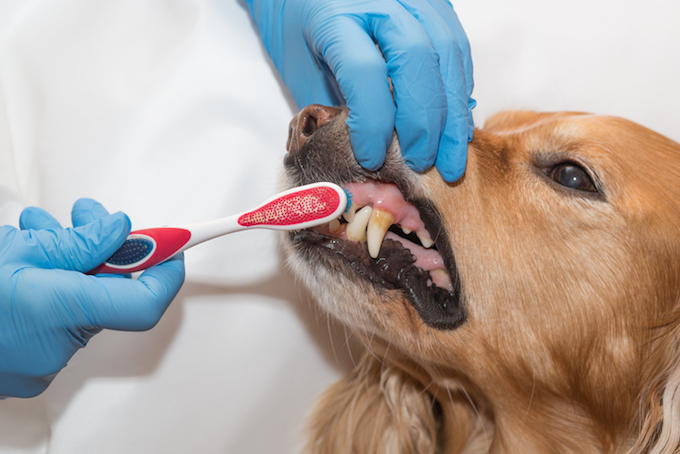Epulis in dogs is a condition that happens when a benign growth forms in a dog’s gum tissue. The condition usually happens close to a tooth.
There are actually a few different types of the condition. Medically, they are called ossifying, fibromatous, and acanthomatous.
The condition causes a range of symptoms that affect how a dog can use its mouth. In some cases, dogs experience bleeding, problems eating, and tooth loss.
The exact cause of the condition is unknown. Unfortunately, some dog breeds including Boxers, American Bulldogs, and Shetland Sheepdogs are more prone to developing it than other breeds.
If you see the signs of epulis in your dog, then get to a veterinarian for a proper diagnosis and treatment.
Here’s what you should know about the symptoms, causes, and treatments for the condition.
Symptoms of Epulis in Dogs
Epulis in dogs produces a range of symptoms. Usually, they affect the mouth. Some of the most common symptoms include:
- Bleeding around the area
- Drooling
- Loss of appetite
- Problems chewing
- Bad breath
- Swollen jaw
- Loss of weight
Causes of Epulis in Dogs

Technically, the cause of the condition is unknown. However, the following dog breeds are most likely to suffer from it:
- Boxers
- Old English Sheepdogs
- English Bulldogs
- Shetland Sheepdogs
- American Bulldogs
Generally, flat-faced dog breeds are most likely to develop the condition.
Additionally, sometimes another condition called gingival hyperplasia is mistaken for epulis. However, that condition causes the gums as a whole to enlarge.
Treatments for Epulis in Dogs
Firstly, your vet will carry out a full physical examination of your dog. Secondly, your vet will focus on your dog’s mouth and gums. Thirdly, blood tests will be taken.
Ultimately, the treatment for the condition is to remove the growth. This is a surgical procedure. An X-ray is used to monitor the extent of the condition.
Following treatment, your dog will be placed on a soft food diet for a few days. Pain medication will also be recommended.
As always, stick to the exact dose and frequency instructions your vet gives you. Also, complete the full course of medicine.
In conclusion, the cause of the condition is unknown — but making sure to clean your dog’s teeth on a regular basis can help avoid dental problems. Ask your vet for more advice on a routine that works for your dog.
Have you ever cared for a dog who suffered from this condition? How did your vet help your dog recover? Let us know in the comments section below.





